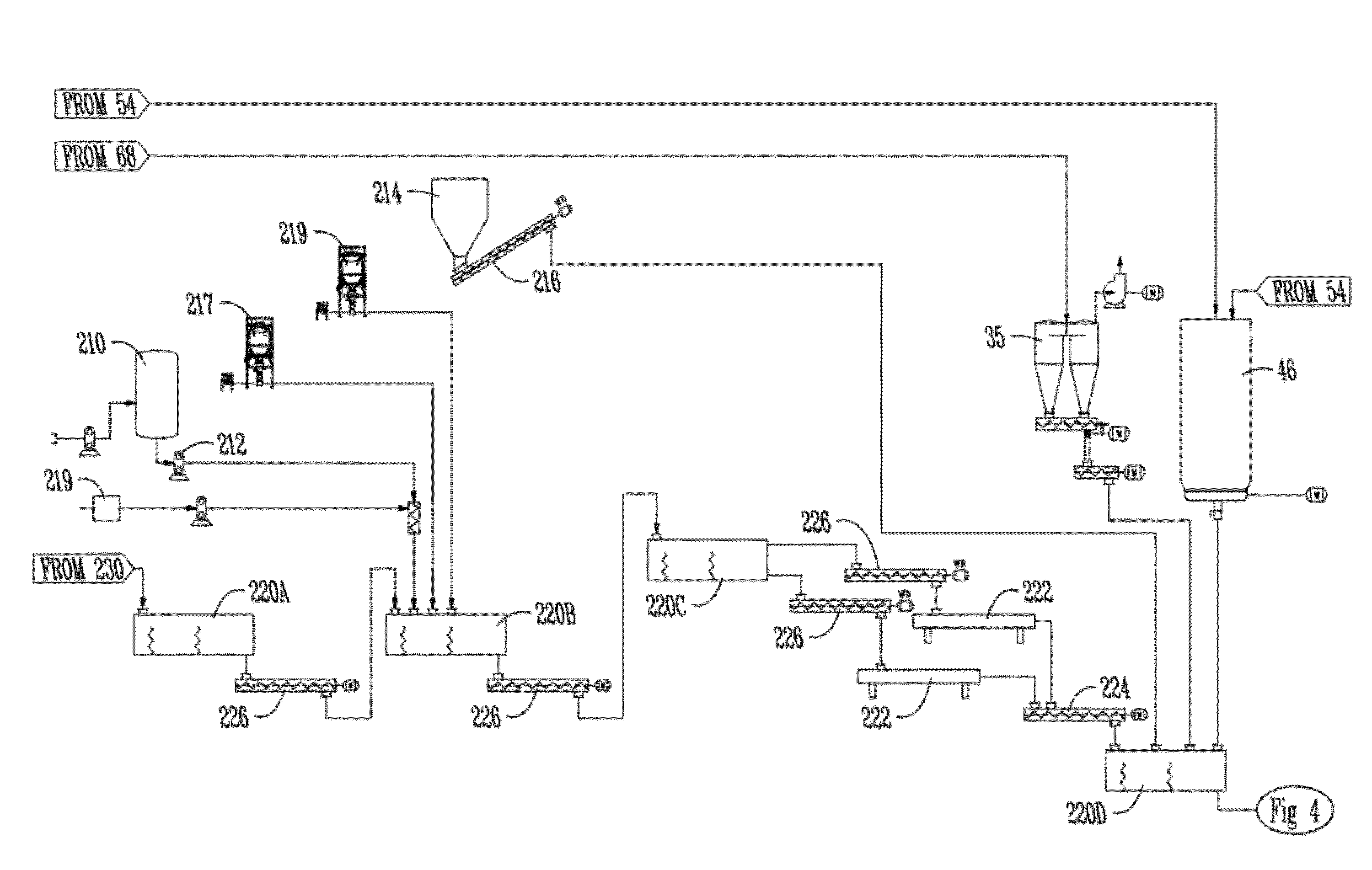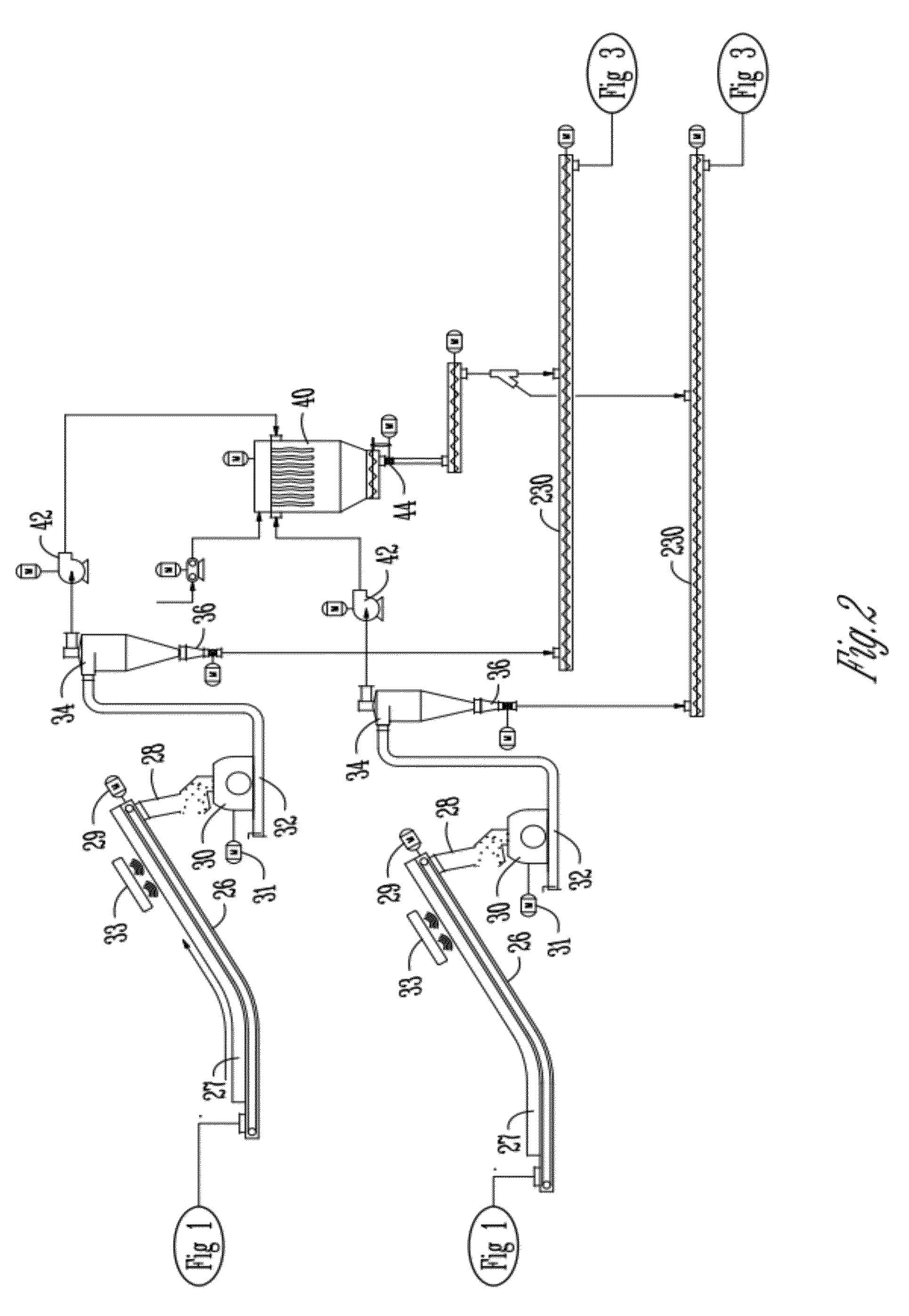Process using agriculture residue biomass for producing feed pellets
- Summary
- Abstract
- Description
- Claims
- Application Information
AI Technical Summary
Benefits of technology
Problems solved by technology
Method used
Image
Examples
Embodiment Construction
[0032]Applicant's co-pending applications, U.S. Ser. No. 12 / 538,351 and U.S. Serial No. 13 / 213,629 describes its general pellet production technology and bale handling processes, respectfully, and are incorporated herein by reference.
Bale Handling
[0033]The bale handling process of the present invention is shown in FIG. 1 and is described in co-pending application Ser. No. 13 / 213,629. Generally, trucks 110 unload bales 13 of agricultural residue biomass onto a series of conveyors 112, 114, 120, 122, 124, 128 and 130 for indexing, accumulating and metering into shredders 22.
Stover Shredding
[0034]The bale shredding process is described in co-pending application Ser. No. 12 / 538,351. The bale shredder in-feed conveyor 130 shown in FIG. 1 pushes the bales 13 into the bale shredder in-feed rolls. The conveyor speed is varied along with the in-feed roll to provide constant load on the shredders 22 as determined by shredder amperage. Unlike traditional shredders or tub grinders, the modified...
PUM
 Login to View More
Login to View More Abstract
Description
Claims
Application Information
 Login to View More
Login to View More - R&D
- Intellectual Property
- Life Sciences
- Materials
- Tech Scout
- Unparalleled Data Quality
- Higher Quality Content
- 60% Fewer Hallucinations
Browse by: Latest US Patents, China's latest patents, Technical Efficacy Thesaurus, Application Domain, Technology Topic, Popular Technical Reports.
© 2025 PatSnap. All rights reserved.Legal|Privacy policy|Modern Slavery Act Transparency Statement|Sitemap|About US| Contact US: help@patsnap.com



